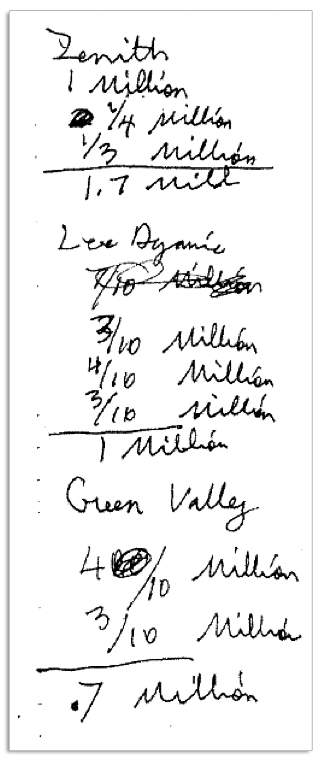Primeros signatarios:1. Immanuel Wallerstein, sociologist, historical social scientist, and world-systems analyst, USA
2. Noam Chomsky, MIT, USA
3. Ken Loach, film and television director, UK
4. Hugo Blanco Galdos, historico dirigente movimiento campesino indigeno, Peru
5. Etienne Balibar, philosophe, France
6. Frei Betto, writer, political activist, liberation theologist, Brazil.
7. Leonardo Boff, theologist and writer, Professor Emeritus of Ethics, Philosophy of Religion, and Ecology at the Rio de Janeiro State University, Brazil.
8. Gaillot Jacques, France, Évêque
9. Paul Jorion, Belgique, Détenteur de la chaire «Stewsardship of Finance», Vrije Universiteit Brussel, Belgium
10. Padre Alex Zanotelli- missionatio comboniano(Napoli- Italia)
11. Ada Colau (major candidate, Barcelona en Comú) Barcelona- Estat español
12. Susan George, honorary president of Attac-France; president of the Transnational Instistute, France
13. Costas Isychos, Deputy Minister of National Defense, Greece
14. James Petras, retired Bartle Professor (Emeritus) of Sociology at Binghamton University in Binghamton, New York and adjunct professor at Saint Mary’s University, Halifax, Nova Scotia, Canada who has published prolifically on Latin American and Middle Eastern political issues, USA
15. ALBIOL GUZMAN Marina parlamentaria electa del Parlamento Europeo en las Elecciones al Parlamento Europeo de 2014 por la coalición de La Izquierda Plural.
16. DE MASI Fabio, Ökonom und Politiker (Die Linke). Bei der Europawahl 2014 wurde er in das Europäische Parlament gewählt.
17. CHRYSOGONOS Kostas, European parliamentarian, Syriza, Greece
18. LOPEZ BERMEJO Paloma, sindicalista y política española. Fue elegida eurodiputada, Izquierda Plural, Espana
19. Ransdorf Milislav, Member of the European Parliament for the Communist Party of Bohemia and Moravia, Czech Republic.
20. FORENZA Eleonora, , Parlamentaria Europea (L’Altra Europa con Tsipras) membro della segreteria nazionale del Partito della Rifondazione Comunista, Italia
21. Arcadi Oliveres, economista català i un reconegut activista per la justícia social i la pau, Catalunya
22. Jorge Riechmann, Jorge Riechmann, ensayista, poeta y profesor de filosofía moral (Universidad Autónoma de Madrid). Miembro del Consejo Ciudadano de Podemos en la Comunidad de Madrid.
23. Joanne Landy. Co-Director, Campaign for Peace and Democracy, New York City, USA
24. Tariq Ali, writer, UK
25. Mariana Mortagua, députée Bloco, Portugal
26. Cecilia Honorio, députée Bloco, Portugal
27. João Semedo, députée Bloco, Portugal
28. José Soeiro, député Bloco, Portugal
29. Jeffrey St. Clair,editor of CounterPunch, author of Born Under a Bad Sky and Grand Theft Pentagon, USA
30. Nico Cué, secrétaire général de la FGTB Métal, Belgium
31. Jaime Pastor, Profesor de Ciencia Política y editor de Viento Sur.
32. Michael Lowy, ecrivain, professeur, France
33. Paolo Ferrero, segretario nazionale del partito della Rifondazione Comunista- Sinistra Europea, Italia
34. Farooq Tariq , General secretary , Awami Workers Party, Pakistan
35. Andrej Hunko, depute Die Linke, Germany
36. Annette Groth, depute Die Linke, Germany
37. Mireille Fanon Mendes France ,Expert ONU, France
38. István Mészáros, Professor Emeritues of Philosophy, University of Sussex, Hungary/UK
39. Pierre Khalfa, coprésident de la Fondation Copernic, France
40. Aminata Traore, ancienne ministre de la culture du Mali
41. CARMEN LAMARCA PEREZ, catedratica de Derecho Penal Universidad Carlos III de Madrid, Espana
42. Francisco Louçã, Bloco de Esquerda, Portugal
43. Pablo Micheli, secrétaire général de la CTA (Central de los Trabajadores Autónoma de la Argentina)
44. Joxe Iriarte «Bikila», Miembro de la coordinadora nacional de la organizacion vasca, Alternatiba y de la coailicion Eh-Bildu.
45. Mary N. Taylor, member of editorial board, LeftEast website/Assistant Director, Center for Place, Culture and Politics, City University of New York., USA
46. Ahlem belhadj, pédopsychiatre; militante féministe, Tunisie
47. Achin Vanaik, founding member of the Coalition for Nuclear Disarmament and Peace and a co-recipient of the International Peace Bureau’s Sean McBride International Peace Prize for 2000, India
48. Michel Warschawski, ecrivain-activiste, Israel
49. Eleonora Forenza, eurodeputata “L’Altra Europa con Tsipras”, Italia
50. Besancenot Olivier, NPA, France
51. Sol Trumbo Vila , Economic Justice, Corporate Power and Alternatives Program , Transnational Institute (TNI)
52. Jesper Jespersen,professor of Economics,Roskilde University, Denmark
53. Marta Harnecker, writer Chile
54. Michael A Lebowitz, economist Canada
55. Krivine Alain, NPA, France
56. Marco Revelli, professore universitario ed ex portavoce “L’Altra Europa con Tsipras”, Italia
57. Marcel Francis Kahn, medecin, France
58. Houtart Francois, Fundaciõn Pueblo Indio del Ecuador
59. SAMIR AMIN,Professeur d’Université,Président Forum Mondial des Alternatives, France
60. Mariya Ivancheva, member of editorial board, LeftEast website/Post-doctoral research fellow, University College Dublin, Ireland
61. Pablo Echenique, Podemos, Espana
62. Gustave Massiah (AITEC (Association Internationale des Techniciens Experts et Chercheurs),membre du Conseil International du Forum Social Mondial, France
63. Juan Carlos Monedero, Podemos, Espana
64. Achcar Gilbert, professor SOAS University of London, UK
65. Gerardo Pisarello (Barcelona en Comú) Barcelona -Estat Español
66. Paul Lootens, Président, Centrale Générale FGTB, Belgium
67. Vicent Maurí, Portavoz Intersindical Valenciana, Espana
68. Pablo Micheli, secrétaire général de la CTA (Central de los Trabajadores Autónoma de la Argentina)
69. Dr Pritam Singh DPhil (Oxford) ,Professor of Economics,Department of Accounting, Finance and Economics, Faculty of Business, Oxford Brookes University, Oxford, UK
70. Raúl Camargo Fernández, candidato en la lista de Podemos a la Comunidad
de Madrid. Miembro de Anticapitalistas, Espana
71. Miguel Benasayag, philosophe, psychanalyste, Argentina/France
72. Vincent DECROLY, ancien parlementaire fédéral indépendant, membre du Secrétariat de VEGA (Vert et de gauche), Belgium
73. Catherine Samary, économiste et altermondialiste, France
74. Harribey Jean-Marie, professeur de sciences économiques et sociales, France
75. Coutrot Thomas, économiste, porte parole d’Attac France
76. Aziki Omar, Secrétaire général, ATTAC/CADTM MAROC
77. Marga Ferré, Coordinadore General de areas Izquierda Unida, Espana
78. Vladimir Unkovski-Korica,member of editorial board, LeftEast website/ Assistant Professor, Higher School of Economics, Moscow, Russia
79. Alessandra Mecozzi,Libera International, Italia
80. Dr. Elmar Altvater, Politikwissenschaftler, Autor und emeritierter Professor für Politikwissenschaft am Otto-Suhr-Institut der FU Berlin., Germany
81. Guido Viale, economist, promotore della lista “L’Altra Europa con Tsipras », Italia
82. Gustave Massiah (AITEC (Association Internationale des Techniciens Experts et Chercheurs)membre du Conseil International du Forum Social Mondial, France
83. Dr Guy Standing,,Fellow of the Academy of Social Sciences, Professor in Development Studies, School of Oriental and African Studies,University of London. Co-President, Basic Income Earth Network (BIEN), UK
84. Julio Perez Serrano, Head of the Contemporary History Research Group, Faculty of Philosophy and Letters,Universidad de Cádiz, Espana
85. Roberto Musacchio, già eurodeputato, Italia
86. Véronique Gallais, militante et actrice de l’économie sociale et solidaire, membre du conseil scientifique d’Attac France
87. Jean Gadrey, économiste, Conseil scientifique Attac, France
88. Rossen Djagalov,member of editorial board, LeftEast website/ Assistant Professor, Koç University, Istanbul, Turkey
89. Paul Mackney – Co-Chair, Greece Solidarity Campaign, UK
90. Katz Claudio, economist, profesor, Argentina
91. Monique Dental, présidente fondatrice Réseau Féministe «Ruptures» France
92. John Weeks, economist. He is a Professor Emeritus of the School of Oriental and African Studies of the University of London, UK
93. Luciana Castellina, già deputata e già presidente Cultura del Parlamento Europeo, presidente onoraria ARCI
94. Tijana Okic, University of Sarajevo, Faculty of Philosophy, Philosophy, Faculty Member, Bosnia/Herzegovina
95. Josep Maria Antentas, profesor de sociología de la Universitat Autònoma de Barcelona (UAB), Espana
96. David Graeber, London School of Economics, Usa/UK
97. Sergio Rossi, Full Professor & Chair of Macroeconomics and Monetary Economics, University of Fribourg, Switzerland
98. Óscar Carpintero,Profesor de Economía Aplicada,Facultad de Ciencias Económicas y Empresariales, Universidad de Valladolid, Espana
99. Geoffrey Harcourt, Emeritus Reader in The History of Economic Theory, Cambridge 1998; Professor Emeritus, Adelaide 1988; Visiting Professorial Fellow, UNSW 2010–2016, Australia
100. Janette Habel , universitaire, France
101. ANDREJA ZIVKOVIC, sociologist and member of Marx21, Serbia
102. Philippe Diaz, cinéaste, réalisateur de « The End of Poverty », USA
103. Attac Castilla y Leon . España.
104. Andrew Ross, Professor of Social and Cultural Analysis, New York University, USA
105. Lieben Gilbert, Secrétaire Générale CGSP Wallonne, Belgium
106. Esther Vivas, periodista, Estado español
107. Pierre Salama, economiste, professeur emerite des universités
108. Teresa Gómez, economista,miembro del Círculo 3E (Economía,Ecología y Energía) de PODEMOS
109. PACD (Plataforma Auditoria Ciudadana de la Deuda), Espana
110. Liliana Pineda, abocada, escritora -15M-movimiento por la defense de agua, Espana
111. Claude Calame,Directeur d’études, EHESS, ATTAC,Ecole des Hautes Etudes en Sciences Sociales, Centre AnHiMA (Anthropologie et Histoire des Mondes Antiques, UMR 8210), France
112. Teivo Teivainen, Professor of World Politics, University of Helsinki, Finland
113. Yannis Thanassekos, Professeur de Sociologie politique, ancien directeur de la Fondation Auschwitz, collaborateur scientifique à l’université de Liège, Belgium
114. Enrique Ortega,, professor-movimiento por la defense de agua, Espana
115. Dr. Karl Petrick,Associate Professor of Economics, Western New England University, UK
116. Rosa Moussaoui, grand reporter à L’Humanité, France.
117. Eric Corijn, Professeur Etudes Urbaines, Vrije Universiteit Brussel
118. Dr. Jorge Garcia-Arias,Associate Professor of Economics,University of Leon, Espana
119. Lankapeli Dharmasiri, member of the Polit Bureau of the NSSP, Sri Lanka
120. Colectivo Internacional Ojos para la Paz
121. Yves Sintomer, Membre de l’Institut Universitaire de France, Professeur de science politique, chercheur au CSU-CRESPPA (CNRS/Université Paris-Lumières), France
122. Prabhat Patnaik, Economist, New Delhi.
123. Roger Silverman, Workers’ International Network, UK
124. Des Gasper, professor of public policy, The Hague, Netherlands
125. Dr Julian Wells, Principal lecturer in economics, School of Economics, History and Politics, Faculty of Arts and Social Sciences, Kingston University, UK
126. Lluís Alòs i Martí, profesor economia,Barcelona
127. Benoit Hazard, Anthropologue, Institut interdisciplinaire d’Anthropologie du Contemporain (UMR Ecole des Hautes Etudes en Sciences Sociales/ Centre National de la Recherche Scientifique), France
128. Bruno THERET, Bruno Théret, économiste, Directeur de recherche émérite au CNRS, université Paris Dauphine, France
129. Steve Keen, professor Head, School of Economics, Politics & History,Kingston University London, UK
130. Jennar Raul Marc, écrivain, France
131. Franchet Pascal, vice-président CADTM, France
132. Adda BEKKOUCHE,Juriste, France
133. Marie-Dominique Vernhes, Rédaction du «Sand im Getriebe» (ATTAC), France
134. Claude Serfati, Economiste, France
135. Samy Johsua, professeur émérite Aix Marseille université
136. Dr. Antoni Domenech, Full Professor of Methodology of Science Faculty of Economics, University of Barcelona, Espana
137. Bibiana Medialdea, economist, Espana
138. Judith Dellheim, Berlin, Zukunftskonvent, Germany
139. Dra. Patricia Britos (Universidad Nacional de Mar del Plata, Argentina)
140. Syed Abdul Khaliq, Focal Person, Executive Director Institute for Social& Economic Justice (ISEJ) Pakistan
141. María Elena Saludas, ATTAC Argentina / CADTM – AYNA, Argentina
142. Gerard PERREAU BEZOUILLE, Premier Adjoint honoraire de Nanterre, France
143. BENHAIM RAYMOND, CEDETIM, ECONOMISTE, France
144. António Dores, Professor Auxiliar com Agregação do Departamento de Sociologia do Centro de Investigação e Estudos de Sociologia (CIES/ISCTE-IUL), Portugal
145. Annie Pourre, No Vox International, France
146. Pedro Ibarra catedrático ciencia política Universidad país vasco, Espana
147. Dan Gallin, Global Labour Institute, Geneva, Switzerland.
148. Cossart Jacques, économiste, France
149. Richard Danie, responsable syndicale FGTB, Belgium
150. Rome Daniel, Attac – Professeur d’économie gestion, France
151. ANGEL GARCÍA PINTADO (escritor y periodista), Espana
152. Gotovitch José, historien, Professeur hon. Université Libre de Bruxelles, Belgium
153. Nacho Álvarez, Professor of Applied Economics, University of Valladolid, Member of Podemos, Espana
154. Dr. Jeff Powell,Senior Lecturer, Economics,Department of International Business & Economics, University of Greenwich, Old Royal Naval College, London, UK
155. J. Francisco Álvarez DNI 41981064S Full Professor of Logic and Philosophy of Science. National Distance University of Spain. Madrid, Espana
156. Christian Zeller, Professor of Economic Geography, University of Salzburg, Austria
157. Dillon John,Ecological Justice Program Coordinator, KAIROS: Canadian Ecumenical Justice Initiatives, Canada
158. Jean-Claude SALOMON, DR honoraire au CNRS, conseil scientifique d’Attac, France
159. Dr.Oscar Ugarteche,Instituto de InvestigacioneEconómicas,UNAM,Ciudad,universitaria, Coyoacán, México DF04510,Coordinador OBELA, Mexico
160. Alberto Montero, economistas de Podemos, Espana
161. Dr Vickramabahu,new same society party- NSSP, Sri Lanka
162. João Romão, Music Sociologist, University of Leipzig, Germany
163. Michel Rouseau, Euromarches, France
164. Julio Alguacil Gómez. Profesor de Sociología. Universidad Carlos III de Madrid, Espana
165. Fernando Rosas, professeur universitaire, Portugal
166. Dr Neil Lancastle,Senior Lecturer, Department of Accounting and Finance, DE MONTFORT UNIVERSITY, LEICESTER, UK
167. Rosaria Rita Canale,Associate professor in Economic Policy, Dept. of Business and Economics, University of Naples «Parthenope», Italia
168. Antonio Baylos, Professeur du Droit de Travail. Université Castilla La Mancha, Espana
169. Abdallah Zniber, ancien président du réseau Immigration Développement Démocratie (IDD) – France
170. Eric Fassin, sociologue, Université Paris-8, France
171. Paul Ariès, politologue, rédacteur en chef du mensuel les Zindigné(e)s, France
172. Nuno Rumo, Democracia e Divida, Portugal
173. Roland Zarzycki, Not Our Debt, Poland
174. Nicolas Sersiron, Président cadtm France et auteur, France
175. Noemi Levy, phd in economics. Chair professor Noemi Levy, UNAM. Economic Faculty, Mexico
176. Domenico M. Nuti, Emeritus Professor, Sapienza University of Rome, Italia
177. Christine Pagnoulle, ATTAC Liège, Université de Liège, Belgium
178. . Dr Judith Mehta, heterodox economist, recently retired from the University of East Anglia, Norwich, UK.
179. Maria João Berhan da Costa, CADPP, Revista Rubra, Habita, Portugal
180. Héctor Arrese Igor, profesor Universidad de Buenos Ayres, Argentina.
181. Ciriza Alejandra, Dra. en Filosofía por la UNCuyo. Investigadora Independiente del CONICET, INCIHUSA CCT Mendoza. Directora del Instituto de Estudios de Género (IDEGE) de la Universidad Nacional de Cuyo, Mendoza, Argentina.
182. René Passet, Professeur émérite d’économie à l’Université Paris 1- Panthéon-Sorbonne, France
183. Dr. Susan Caldwell, professor (retired), Conseil d’administration d’Alternatives, Montréal, Canada
184. Dr. Deborah Potts , Reader in Human Geography, King’s College London, UK
185. Dr. James D. Cockcroft, author, professor (retired), Honorary Editor Latin American Perspectives; a founder Red en Defensa de la Humanidad; Montréal, Canada
186. Daniela Tavasci , senior lecturer ,Queen Mary University of London, UK
187. Wilfred Dcosta, Indian Social Action Forum – INSAF,New Delhi, India
188. Malcolm Sawyer,Emeritus Professor of Economcs,University of Leeds, UK
189. Matyas BENYIK, Chairman of ATTAC, Economist, Budapest, Hungary
190. Ricardo Ortega Gonzalez, economista, funcionario de Eusko Jaurlaritza-Gobierno Vasco, Espana
191. Gabriel Colletis, Professeur de Sc. économique à l’Université de Toulouse 1-Capitole. France
192. Adam Rorris, National Coordinator, Australia-Greece Solidarity Campaign, Australia
193. Carlos Durango Sáez , Universidad Carlos III de Madrid, Espana
194. Dr. Laura Horn, Associate Professor, Roskilde University, Denmark
195. Dr. Peter Herrmann, Федеральное государственное бюджетное образовательное учреждение высшего профессионального образования «Российский экономический университет имени Г.В. Плеханова/
Federal state-funded educational institution of higher professional education Plekhanov Russian University of Economics, Russia
196. Dr. Miriam Boyer, ibero-Amerikanisches Institut, Germany
197. Jérôme Duval, CADTM, Estado español
198. Michael Hartmann, Professur für Elite- und Organisationssoziologie, Technische Universität Darmstadt, Germany
199. Dr. Ulrich Duchrow, professor, Scientific Council of Attac Germany
200. Mogens Ove Madsen,Associate Professor, Department of Business and Management, Aalborg University, Denmark
201. Guglielmo Forges Davanzati, Professor of Political Economy,University of Salento, Italia
202. Mehmet Ugur,Professor of Economics and Institutions, University of Greenwich Business School, UK
203. Jacques Berthelot, économiste, France
204. Herbert Schui, Prof. of Economics, Germany
205. Mateo Alaluf, Prof émérite de l’Université Libre de Bruxelles (ULB), Belgium
206. Michele CANGIANI, economist, ecrivain, université Ca’ Foscari, Venise, Italia
207. Marcela de la Peña Valdivia, Chargée de missions (Sociologue, Maitrise en gestion interdisciplinaire de l’environnement, spécialité femmes et développement. Certificat interuniversitaire d’évaluation de politiques publiques, Suisse
208. Jean Batou, professeur, Université de Lausanne, Suisse
209. Julia Varela Fernández, catedrática de sociología de la universidad complutense, Espana
210. Benny Asman, Economic historian, Belgium
211. Pepe Mejia, activista/militante de Attac Madrid, Plataforma contra la operación especulativa en Campamento, Plataforma en Defensa de la Sanidad Pública de Latina, miembro de Podemos y de Anticapitalistas, Espana
212. Joaquin Aparicio Tovar, Catedrático de Derecho del Trabajo y La Seguridad Social. Decano, Universidad de Castilla-La Mancha, Espana
213. raffaella bolini – Arci
214. International Alliance of Inhabitants (Cesare Ottolini IAI Global Coordinator)
215. Marco Bersani, Attac Italia
216. Professor Robert Dixon,Department of Economics, The University of Melbourne, Australia
217. Nicolás Giest, argentinian lawyer, and a also a researcher about the argentinian external debt, Argentina
218. Anastassia Politi, metteur en scène – comédienne, France
219. Luis Glez Reyes. Ecologistas en Acción, Espana
220. Georges Menahem, Economiste et sociologue, directeur de recherche au CNRS, MSH Paris Nord, France
221. Franck Gaudichaud, enseignant-chercheur Université Grenoble-Alpes (France)
222. Iván H. Ayala, profesor universitario, investigador del Instituto Complutense de Estudios Internacionales, Espana
223. Asier Blas Mendoza – Profesor del Departemento de Ciencia Política de la Universidad del País Vasco UPV/EHU, Espana
224. Jean NKESHIMANA, Country Program Manager, Terre des Jeunes du Burundi
225. Piero Di Giorgi, direttore di Dialoghi Mediterranei, Italia
226. Dr. Stefanie Wöhl,Guest Professor,University of Kassel,Political Science Department, Kassel, Germany
227. Enzo Scandurra, Full Professor of Urban Planning, Sapienza University of Rome, Italia
228. Massimo Pasquini, Segretario Nazionale Unione Inquilini, Italia
229. Manuel Martínez Forega, Crítico literario y filólogo. Estudios de Filología Española, de Filología
Románica y de Derecho en la Universidad de Zaragoza, Espana
230. Josep Maria Antentas, profesor de sociología de la Universitat Autònoma de Barcelona (UAB), Espana
231. Barry Finger, Editorial board member, New Politics, Netherlands
232. Giusto Catania, Assessore al Comune di Palermo. – Ex Deputato europeo, Italia
233. Janette Habel , universitaire, France
234. Francesco Denozza, Professore ordinario di diritto commerciale., Dipartimento di diritto privato e storia del diritto., Università degli Studi di Milano, Italia
235. Javier De Vicente, (on behalf of) UNION SINDICAL OBRERA (USO), Secretario Confederal de Accion Internacional, Espana
236. Sebastian Franco (Alter Summit wants to sign the Call for the Commission on debt audit).
237. Jonathan Davies, Professor of Critical Policy Studies, De Montfort University, UK
238. Katu Arkonada – Red de Intelectuales en Defensa de la Humanidad, Espana
239. Juan Tortosa, periodista, Espana
240. Eleonora Ponte, Movimento NO TAV Valle di Susa, Italia
241. Pablo de la Vega, Coordinador Regional, En representación de la “Plataforma Interamericana de Derechos Humanos, Democracia y Desarrollo (PIDHDD Regional)”, organización de derechos humanos de carácter regional, con presencia en 15 países latinoamericanos y caribeños, y sede administrativa en Quito Ecuador
242. Matias Escalera, Cordero, Escritor y profesor, Espana
243. Enzo Traverso, Cornell University, USA
244. José Manuel Lucía Megías, Catedrático de la Universidad Complutense de Madrid, Escritor, Espana
245. Juan Ramón Sanz, Presidente de la Fundación «Domingo Malagón» Madrid España
246. Bruce Clarke, artiste plasticien, France
247. Luis Buendia, Associate Professor of Economics, Espana
248. Dominique Taddéi, économiste, ancien député, président de la commission des lois à l’Assemblée Nationale, France
249. Isabel Pérez Montalbán, escritora, Espana
250. Pablo Duque García-Aranda. Músico y profesor. Madrid, España
251. Frédéric Neyrat, philosophe français, ancien directeur de programme au Collège international de philosophie et Docteur en philosophie (1998). Il est membre du comité de rédaction de la revue Multitudes et de la revue Lignes, France
252. Daniel TANURO, militant écosocialiste, membre de la LCR, Belgium
253. BRACONNIER, Yves, CGSP-Enseignement-Luxembourg, Belgium
254. Jean-Marie Roux, économiste et syndicaliste France
255. Antonio Canalìa sindacalista CGIL Piemonte Italia
256. Michel Cahen, senior researcher, CNRS/Sciences Po Bordeaux, France.
257. Yu Maxime, Compositeur-Comédien, Liège, Belgiun
258. Renato Zanoli – Commissione Ambiente PRC Torino – Italia
259. Luis Cabo Bravo, miembro de IU de Madrid y de la dirección del PCE, Espana
260. Giorgio Ferraresi, “Società dei territorialisti”, già Ordinario di urbanistica al Politecnico di Milano, Italia
261. Edouard Bustin, enseigne les Sciences Politiques à l’Université de Boston et est, également, membre du Centre d’études africaines, USA/Belgium
262. Guillermo Cruz, Guillermo Cruz, realizador de documentales (€uroestafa), España,
263. Françoise Clément, chercheur militante altermondialiste, France
264. Gianni Fabbris – coordinatore nazionale di Altragricoltura –
Confederazione per la Sovranità Alimentare, Italia
265. Luis Dominguez Rodriguez. , Presidente de Attac Castilla y Leon.
266. Antonio Martinez-Arboleda, Reino Unido, profesor universitario, Espana
267. Werner Ruf, Professor an der Universitaet Kassel, Germany
268. Ricardo García Zaldívar. Economista. Activista (Attac España
269. Pratip Nag, Unorganised Sector Workers Forum, India
270. Marc Amfreville (professeur Paris-sorbonne), France
271. L’Initiative de Solidarité avec la Grèce qui Résiste – Bruxelles, Belgium
272. Jean-Michel Ganteau, Professeur, Université Montpellier 3, France
273. Marco Revelli, professore universitario ed ex portavoce “L’Altra Europa con Tsipras”, Italia
274. Rosa Rinaldi, Direzione Rifondazione Comunista
275. Sylvie FERRARI, Associate professor in economics, University of Bordeaux, France
276. Srecko Horvat, Independent scholar, Croatia
277. Karl Fischbacher (Labournet-Austria)
278. Guido Ortona (Prof. Ordinario di Politica Economica),Dipartimento DIGSPES,, Università del Piemonte Orientale, Italia
279. oscar flammini, Espacio de Cultura y Memoria «El Rancho Urutau» de la Ciudad de Ensenada,Provincia de Buenos Aires,Argentina
280. Isabel VAZQUEZ DE CASTRO, Enseignant-Chercheur, formatrice ESPE, France
281. Arnal Ballester, dessinateur. Catalogne, Espana
282. amal Juma, coordinator of the Stop the Wall Campaign.
283. Liliane Blaser, Documentalista, Venezuela
284. Gonzalo Haya Prats, profesor y director del Departamento de Teología en la Universidad del Norte de Chile; profesor de habilidades directivas en instituciones de enseñanza empresarial en España
285. Sol Sánchez Maroto. Socióloga/Antropóloga/ Activista (Attac España)
286. Raquel Freire, cineasta, activista, Portugal
287. Lisa Tilley, Erasmus Mundus GEM Joint Doctoral Fellow, Department of Politics and International Studies, University of Warwick, Université Libre de Bruxelles, Belgium
288. Thomas Berns, professeur, Université Libre de Bruxelles, Blegium
289. Francesca Gobbo , former Professor of Intercultural Education & Anthropology of Education, University of Turin, Associate Editor of «Intercultural Education», Italia
290. Marcos Del Roio, prof. de Ciências Políticas UNESP, Brasil.
291. Andrea Zinzani, researcher in Political Geography, CNRS (Paris), France
292. MARIAN SANTIAGO (ciberactivista ecosocial), Espana
293. Gloria Soler Sera, Barcelona, escritora-profesora, Espana
294. Sara Rosenberg, escritora y dramaturga, Argentina-España
295. CARINA MALOBERTI, Consejo Directivo Nacional – ATE-CTA (Asociación Trabajadores del Estado – Central de Trabajadores de la Argentina)
296. Convocatoria por la liberación Nacional y Social, Frente Sindical:
Agrupación Martín Fierro (Varela, Mar del Plata y Neuquén
297. Massimo Torreli, Responsabile “L’Altra Europa con Tsipras”.
298. Hichem SKIK, universitaire, dirigeant Parti «Al-Massar» (Voie démocratique et sociale), Tunisie
299. Inma Luna,escritora, poeta, periodista y antropóloga, Espana
300. Manuel Giron, catedratico, Alicante, Espana |
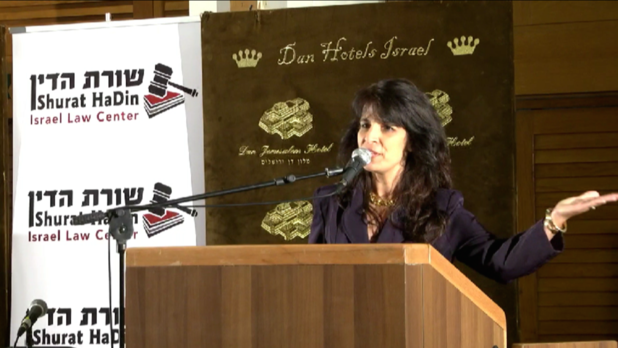

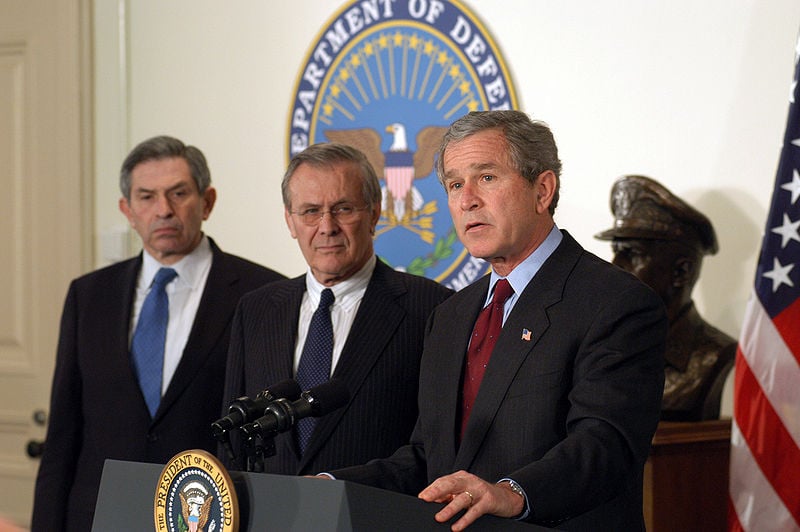
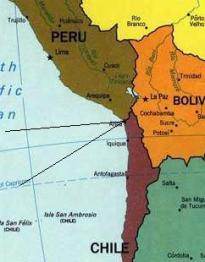


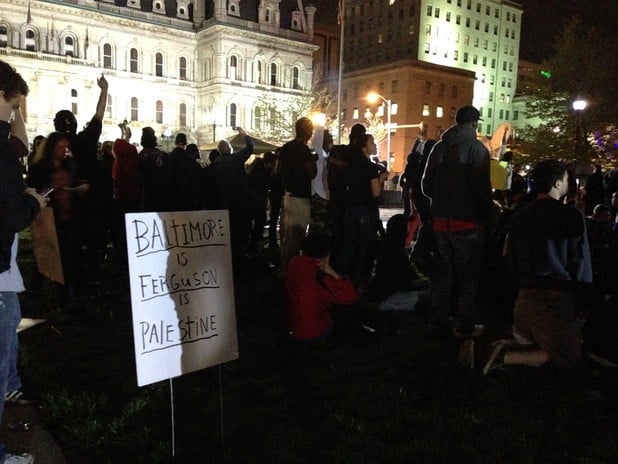

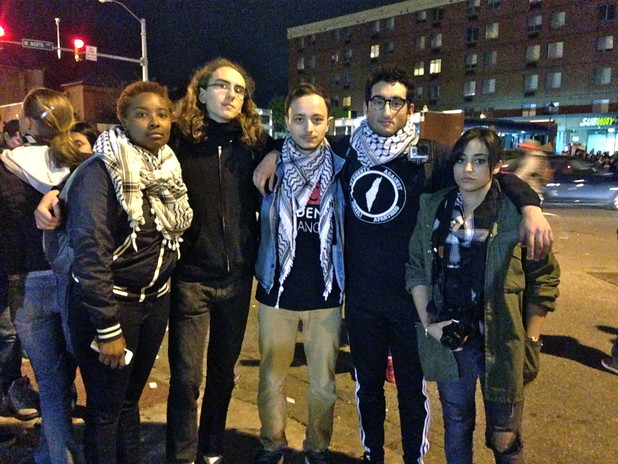

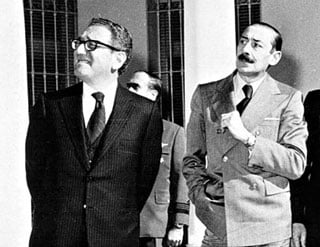
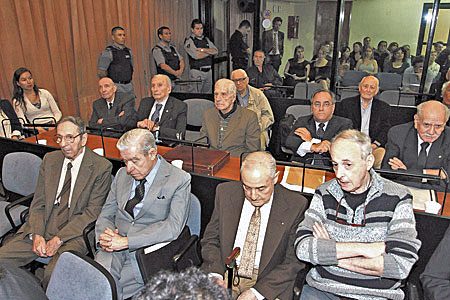


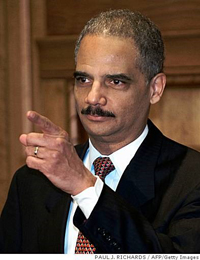 The US Government officials in charge of this process included Eric Holder (right), who was US Attorney-General from February 3, 2009 until April 27, 2015; Hillary Clinton, Secretary of State from January 21, 2009, until February 1, 2013; and Nuland, Assistant Secretary of State from September 18, 2013. In that same month, September 2013, there was a change of director at the Federal Bureau of Investigation (FBI) – Robert Mueller was replaced on September 4, 2013, by James Comey.
The US Government officials in charge of this process included Eric Holder (right), who was US Attorney-General from February 3, 2009 until April 27, 2015; Hillary Clinton, Secretary of State from January 21, 2009, until February 1, 2013; and Nuland, Assistant Secretary of State from September 18, 2013. In that same month, September 2013, there was a change of director at the Federal Bureau of Investigation (FBI) – Robert Mueller was replaced on September 4, 2013, by James Comey.


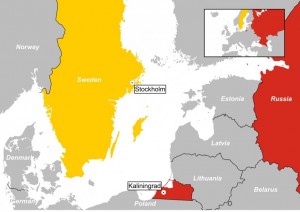




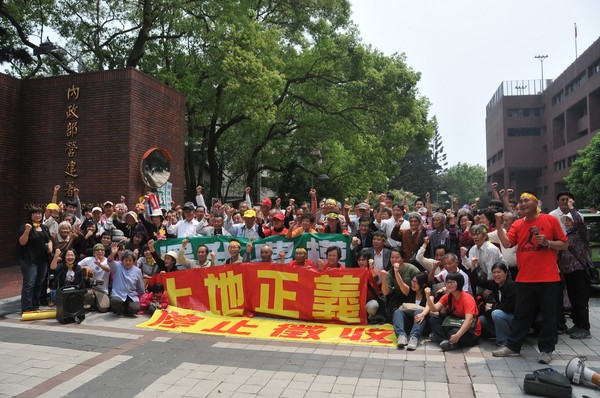
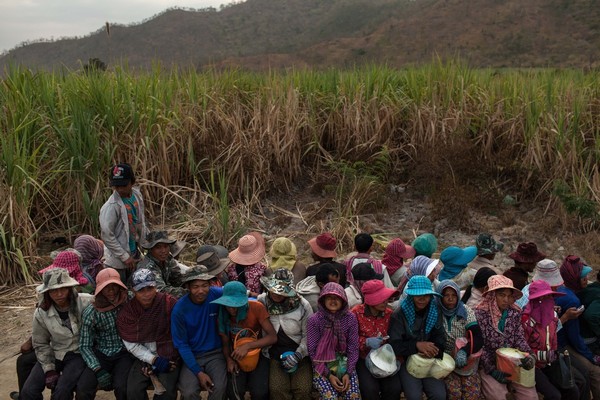

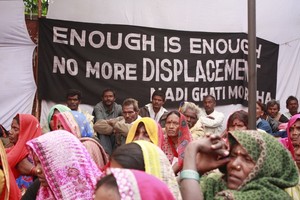
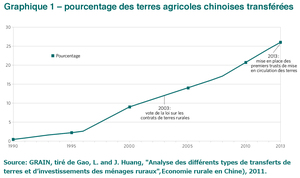 Cliquez pour élargir
Cliquez pour élargir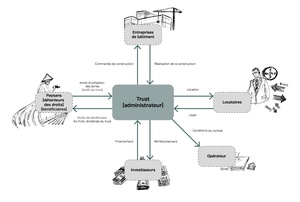


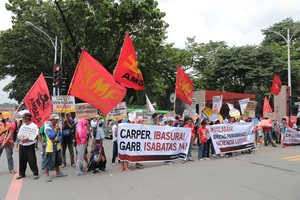

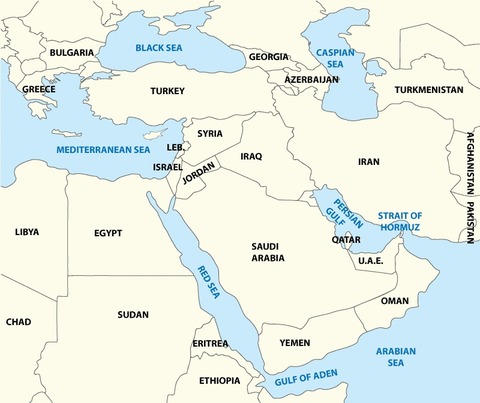


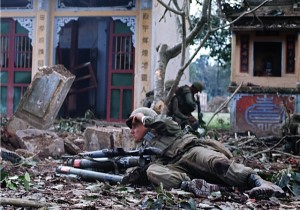
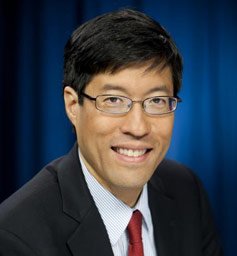

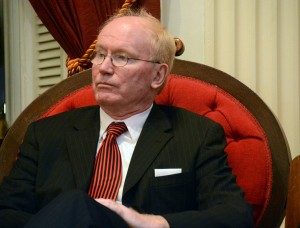


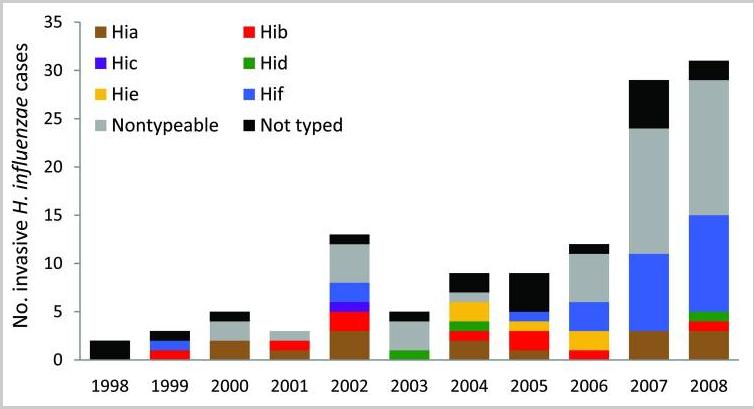




 Why the rise of ISIS and the fall of Iraq weren’t inevitable.
Why the rise of ISIS and the fall of Iraq weren’t inevitable.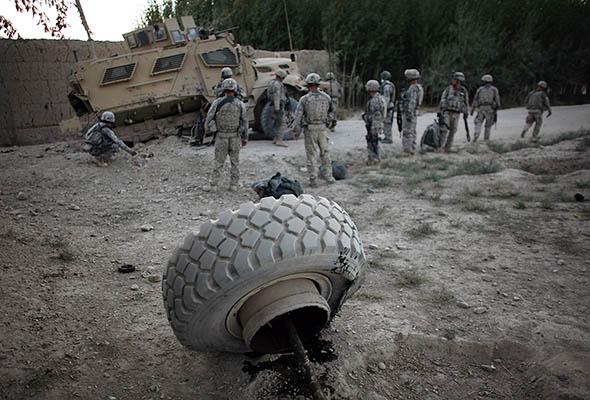
 The Pentagon wasn’t just defeated by the country’s graft—the Pentagon made it worse.
The Pentagon wasn’t just defeated by the country’s graft—the Pentagon made it worse.
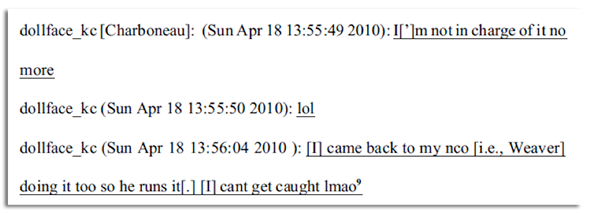 Although prosecutor Mark Dubester said in the sentencing memo that Charboneau’s use of the term lmao (Internet slang for “laughing my ass off”) demonstrated that she “saw humor in the situation,” Charboneau said she did not. When she returned to Fenty, she said, Weaver pulled her aside and told her that he knew how everything worked, and while he had not made much money off of the scheme so far, it would be wise of her to keep her mouth shut.
Although prosecutor Mark Dubester said in the sentencing memo that Charboneau’s use of the term lmao (Internet slang for “laughing my ass off”) demonstrated that she “saw humor in the situation,” Charboneau said she did not. When she returned to Fenty, she said, Weaver pulled her aside and told her that he knew how everything worked, and while he had not made much money off of the scheme so far, it would be wise of her to keep her mouth shut.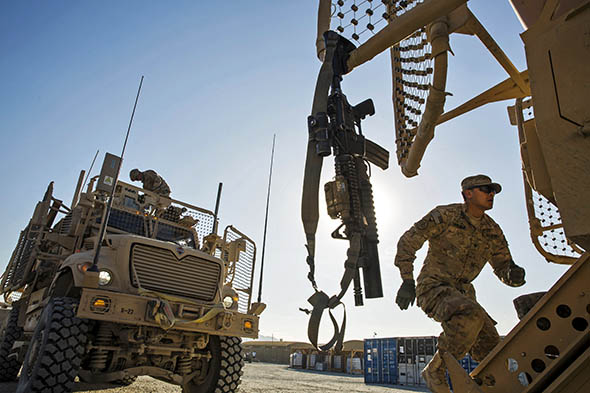
 Even by the diminished standards of 21st-century warfare, the conclusion of combat operations in Afghanistan feels awfully anticlimactic.
Even by the diminished standards of 21st-century warfare, the conclusion of combat operations in Afghanistan feels awfully anticlimactic.


 A U.S. military presence could have mollified Sunnis and prevented the new civil war.
A U.S. military presence could have mollified Sunnis and prevented the new civil war.